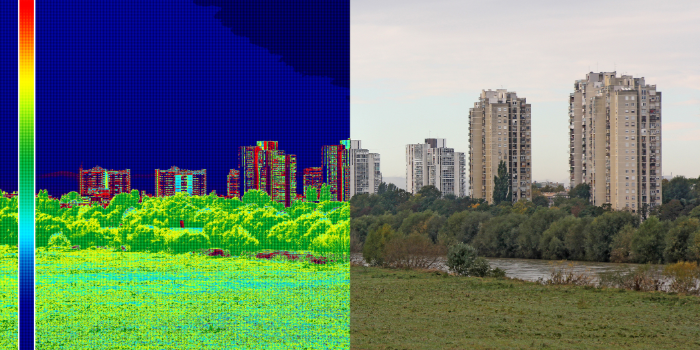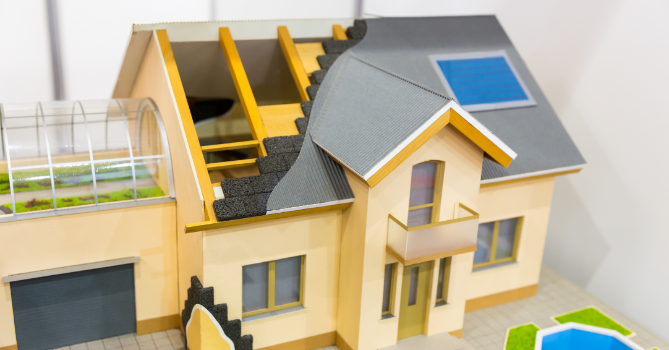
Thermal Imaging: Pioneering Sustainability in Urban Landscapes
Thermal imaging is like a super camera. It sees heat instead of light. This means it can show us things our eyes can't. It captures heat coming from objects. This helps us find where heat is leaking from buildings. It also shows if machines are overheating. In simple terms, it helps us see how hot or cold things are. That's why it's useful for finding problems and making things work better. So, in a nutshell, thermal imaging is all about seeing heat to fix stuff and save energy.
In sustainable architecture, thermal imaging is a superhero tool. It helps architects make buildings eco-friendly. By using thermal imaging, they can spot places where buildings lose heat. This helps in making them cozy without wasting energy. It's like finding leaks in a boat and plugging them up. Thermal imaging also helps in planning where to put windows and insulation. This makes buildings more energy-efficient and comfortable. So, in sustainable architecture, thermal imaging is like a secret weapon that helps in saving energy and making buildings green and snug.
In urban planning, thermal imaging is a game-changer. It helps planners understand how cities breathe, so to speak. By using thermal imaging, they can see where cities get too hot or too cold. This helps in making neighborhoods more comfortable for people to live in. It also helps in designing parks and green spaces to cool things down. Plus, thermal imaging helps in finding energy waste in buildings and streets. So, in urban planning, thermal imaging is like having a magic map that shows where to make cities more livable and eco-friendly.
Thermal imaging is like a money-saving wizard. It helps businesses and homeowners find problems quickly. By catching issues early, they can save lots of money on repairs. Plus, it helps in using energy wisely, which cuts down on bills. This means more cash in your pocket. And since thermal imaging is fast and accurate, it saves time too. No need for long inspections or guesswork. So, in terms of efficiency and cost-effectiveness, thermal imaging is like having a superhero that saves the day and your wallet at the same time.
Thermal imaging makes understanding data a breeze. With advanced software, it's like having a super-smart assistant. It quickly turns heat patterns into easy-to-read pictures. This means architects and planners can make decisions faster. No need for hours of staring at numbers or complicated graphs. Plus, the software can spot problems automatically, saving even more time. So, when it comes to data interpretation, thermal imaging is like having a trusty sidekick that helps you make sense of things in a snap.
Thermal imaging is super flexible. It works for big projects and small ones too. Whether it's a tiny house or a giant skyscraper, thermal imaging has got you covered. It's like a tool that can adapt to any situation. Plus, it's not just for buildings. It can also be used for streets, parks, and even forests. So, no matter what you're working on, thermal imaging can help. It's like having a Swiss Army knife that's perfect for any job, big or small.

Let's look at some real-life examples of how thermal imaging works wonders. In the Sabarmati Riverfront Development project, architects used thermal imaging to detect heat leaks in buildings. This helped them make the buildings more energy-efficient, saving money and reducing carbon emissions. Similarly, at the Entrepreneurship Development Institute, thermal imaging was used to identify areas where insulation was lacking. By fixing these issues, the institute was able to cut down on energy bills and create a more comfortable environment for students and staff.
Another inspiring case is the Central Vista Redevelopment project in Delhi. Here, thermal imaging was instrumental in assessing the energy performance of the new buildings. This allowed architects to optimize the design for maximum energy efficiency. And in the field of sustainable architecture, every bit of energy saved makes a big difference.
These case studies show that thermal imaging is not just a fancy gadget – it's a powerful tool for creating sustainable and comfortable spaces. By identifying and fixing energy inefficiencies, thermal imaging helps in making buildings more eco-friendly and cost-effective. So, whether it's a riverside development, an educational institute, or a government project, thermal imaging has proven its worth time and time again.
Thermal imaging isn't just about saving money – it's also about saving the planet. By making buildings more energy-efficient, it helps in reducing carbon emissions. This means less pollution and a healthier environment for everyone. Plus, by conserving energy, we're also conserving natural resources. So, in the grand scheme of things, thermal imaging plays a vital role in combating climate change and preserving the Earth for future generations. It's like taking a small step towards a greener and cleaner world every time we use it.
The future looks bright with thermal imaging leading the way. As technology advances, so does thermal imaging. Innovations like improved sensors and AI-driven analysis promise even greater efficiency and accuracy. Imagine buildings that can detect and fix problems on their own, thanks to smart thermal imaging systems. Moreover, with the growing focus on sustainability, thermal imaging is set to become an indispensable tool in designing eco-friendly cities of tomorrow. It's like peeking into a future where energy waste is a thing of the past, and every building is a beacon of efficiency and sustainability.
Experts in the field of architecture and urban planning rave about thermal imaging. Dr. Bimal Patel, a renowned architect, hails it as a game-changer in sustainable design. He emphasizes its role in creating energy-efficient buildings and resilient urban landscapes. Additionally, industry leaders like environmental engineers and energy consultants laud thermal imaging for its effectiveness in identifying energy waste and reducing carbon footprints. Their endorsement underscores the credibility and importance of thermal imaging in shaping the future of sustainable architecture. So, when experts speak, it's clear that thermal imaging is more than just a tool – it's a catalyst for positive change.

Numerous research studies support the effectiveness of thermal imaging in sustainable architecture. According to findings published in reputable journals, thermal imaging helps in optimizing energy usage and reducing environmental impact. Studies highlight its ability to identify heat loss in buildings and improve insulation efficiency. Moreover, research demonstrates the cost-effectiveness of thermal imaging in long-term energy savings. These studies provide solid evidence of thermal imaging's contribution to sustainable design practices. So, whether it's peer-reviewed articles or independent research, the consensus is clear: thermal imaging is a valuable tool for creating greener and more energy-efficient buildings.
Clients who have used thermal imaging sing its praises. From homeowners to businesses, they all appreciate its benefits. One client, a homeowner, marvels at how thermal imaging helped them save on heating bills by pinpointing insulation issues. Another client, a business owner, applauds its role in identifying equipment malfunctions before they became costly problems. These testimonials highlight the real-world impact of thermal imaging on saving money and improving comfort. So, whether it's for a cozy home or a thriving business, clients agree: thermal imaging is a smart investment that pays off in more ways than one.
In conclusion, thermal imaging emerges as a powerful tool with the potential to revolutionize sustainable architecture and urban planning. With its ability to detect heat variations, optimize energy usage, and identify areas for improvement, thermal imaging offers a holistic approach towards creating eco-friendly and comfortable spaces. From detecting insulation defects to assessing energy performance, its applications are vast and impactful. Moreover, with advancements in technology and increasing awareness of sustainability, the future prospects of thermal imaging appear promising. As experts endorse its effectiveness and research studies validate its benefits, it becomes clear that thermal imaging is not just a trend but a necessity in the pursuit of greener and more resilient cities. So, let's embrace thermal imaging as a vital component in our journey towards a sustainable and brighter future for generations to come.